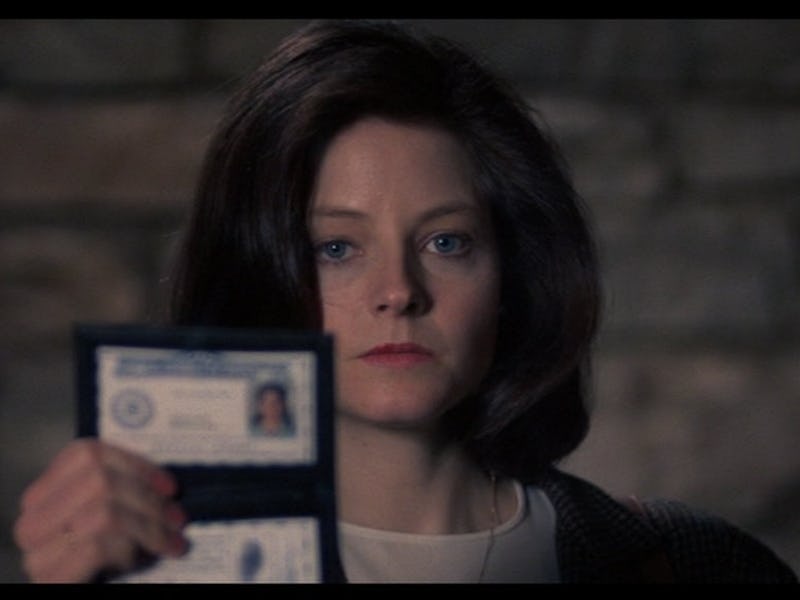Why We Need Another 'Silence of the Lambs'
25 years later, 'Silence of the Lambs' is the only horror film to have won Best Picture.

In February 1991, Jonathan Demme’s Silence of the Lambs, a horror film based on a series of paperback novels about serial killers, was released. Critics were baffled at the film’s ability to make pulpy, shocking genre work feel intelligent; The New Yorker called it “artful pulp — tabloid material treated with intelligence and care and a weird kind of sensitivity.”
Though horror has grown in the last 25 years into a genre with a large scope, the Academy has become disinterested in honoring films that resemble pulp. It seems odd, considering today’s cinema, that Silence of the Lambs won Best Picture, despite critics adoring its “chilling intensity” and “unsettling” use of gore. It would be difficult to describe any of the films currently nominated for Best Picture as “chilling,” unless one was referring to the literal frozen hellscape in The Revenant. This is unfortunate, since 2015 was a year marked by auteur-driven horror.
Some genre films have caught the Academy’s attention — Mad Max: Fury Road is this year’s action-and-art-film hybrid nominated for Best Picture — but no classic horror film has won since Silence of the Lambs. Fantasy and science fiction nominees for Best Picture since 1991 have included The Lord of the Rings trilogy, The Green Mile, Avatar, Inception, and Her, but the only horror film nominated for Best Picture since The Silence of the Lambs was The Sixth Sense in 1999.
The Academy’s distaste for horror and psychological thrillers is perplexing. If the quiet and tense ghost story The Sixth Sense was worthy of a Best Picture nomination, why not equally intimate horrors like The Babadook, Se7en, Audition, It Follows, Kim Jee-woon’s I Saw the Devil, or Let the Right One In? If the bombastic-yet-arty Mad Max is worthy of the Academy’s attention, why not 28 Days Later or The Descent? One might argue that the intention of the average horror film is simply to scare its audience, whereas Silence of the Lambs transcended its true-crime horror tropes and told a remarkable, psychological human story. The Orphanage, The Host, and even The Others shared these values, and the films hold up far better than some genre flicks that received Best Picture nominations. Film theorists will still watch Pascal Laugier’s Martyrs in 50 years, but films like Jerry Maguire, As Good as It Gets, Erin Brockovich, and Ray already feel cheesy and dated.
It’s a sad byproduct of the Academy’s fear of fringe cinema that its nominees have become more homogenous — how many tense films about families can we watch before our eyes bleed? — and less inclined to inspire loud, challenging emotions in their viewers. Back in 1991, the best picture of the year was genuinely and deeply disturbing. Its hero worked with a cannibal in order to catch a twisted, erotic serial killer, and the film closed on a brutal note. In 2016, the Academy will decide whether to award The Revenant for its infamously difficult production (though Bone Tomahawk was arguably just as memorable of a film), or to give Best Picture to a film so devoid of artistic flair or unique cinematography that it will be all but forgotten by 2017.
Spotlight, Brooklyn, and The Martian already feel neutered, telling their stories in the most approachable, and least objectionable way possible. None of the Best Picture nominees play with how they deliver information, whether chronologically or visually. They are idealogical cousins to pleasant and boring nominees (and winners!) from previous years, including The King’s Speech, American Sniper, Philomena, Lincoln, and The Kids Are Alright.
Though the Academy promised the public it would broaden its understanding of ethnic and cultural diversity in the years to come, it should also attempt to reach into the corners of cinema responsible for the most innovation: namely, science fiction and horror films. Audiences deserve to feel chilled, dared ,and unsettled when they head to the theater to watch “Oscar bait,” and filmmakers whose work is more daring than the kind of film your grandparents might rent on a Tuesday deserve to be recognized for their tenacity and courage. The Academy can’t award the best of contemporary cinema while ignoring works that are bloody, ugly, crude, or disturbing. It’s a disservice to film to assume that these categories don’t ever overlap. They did in 1991, so why not again?